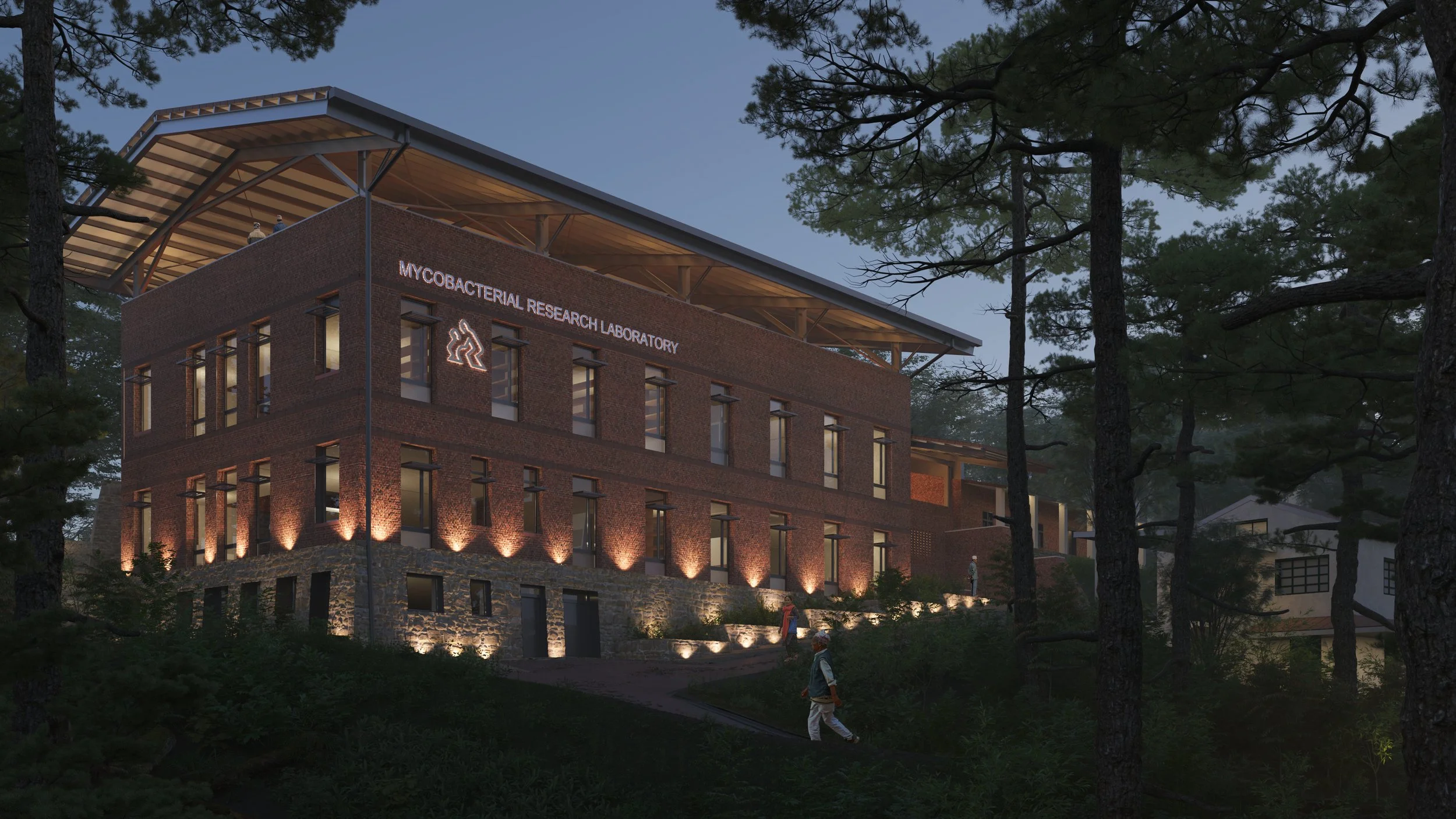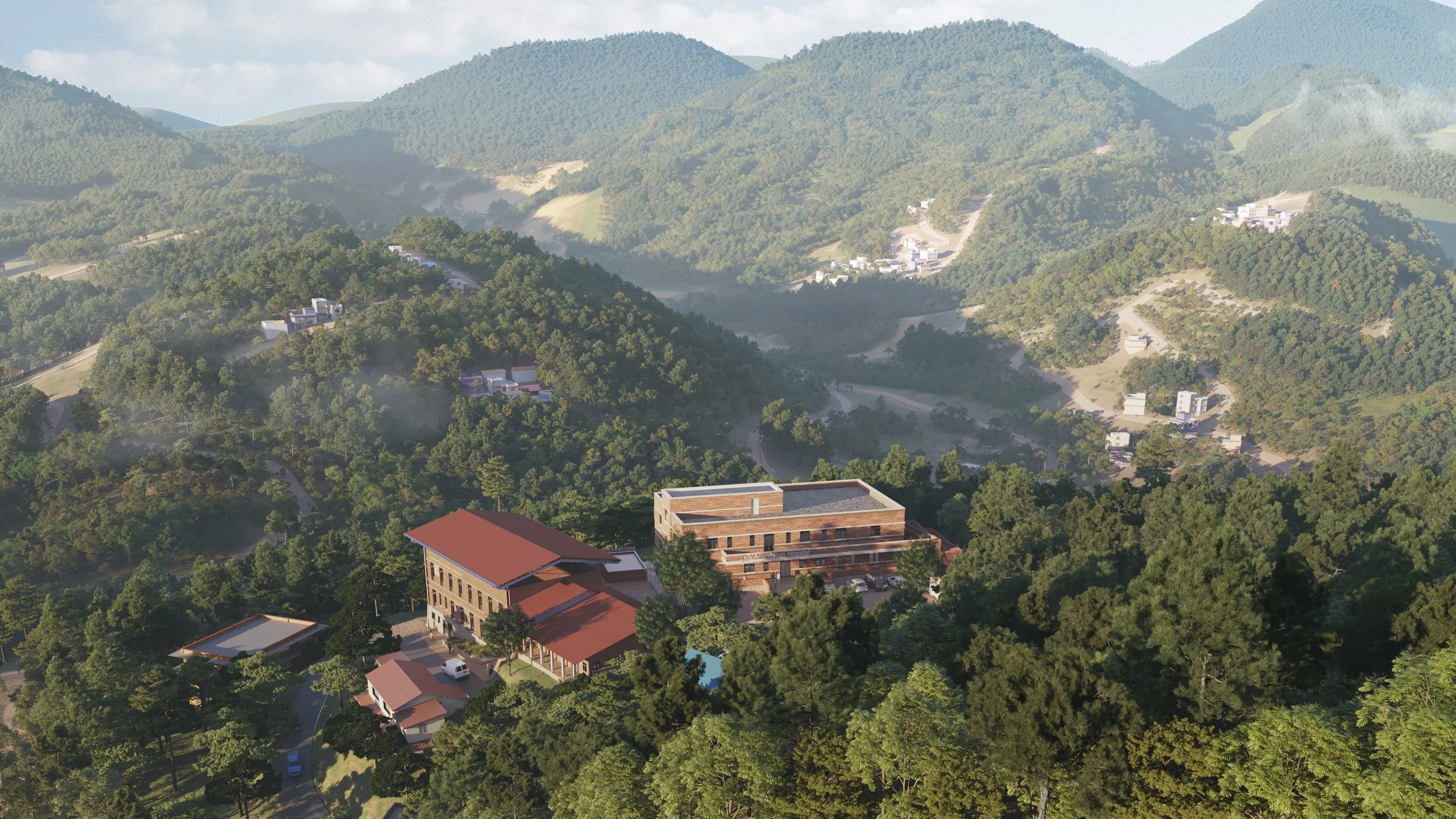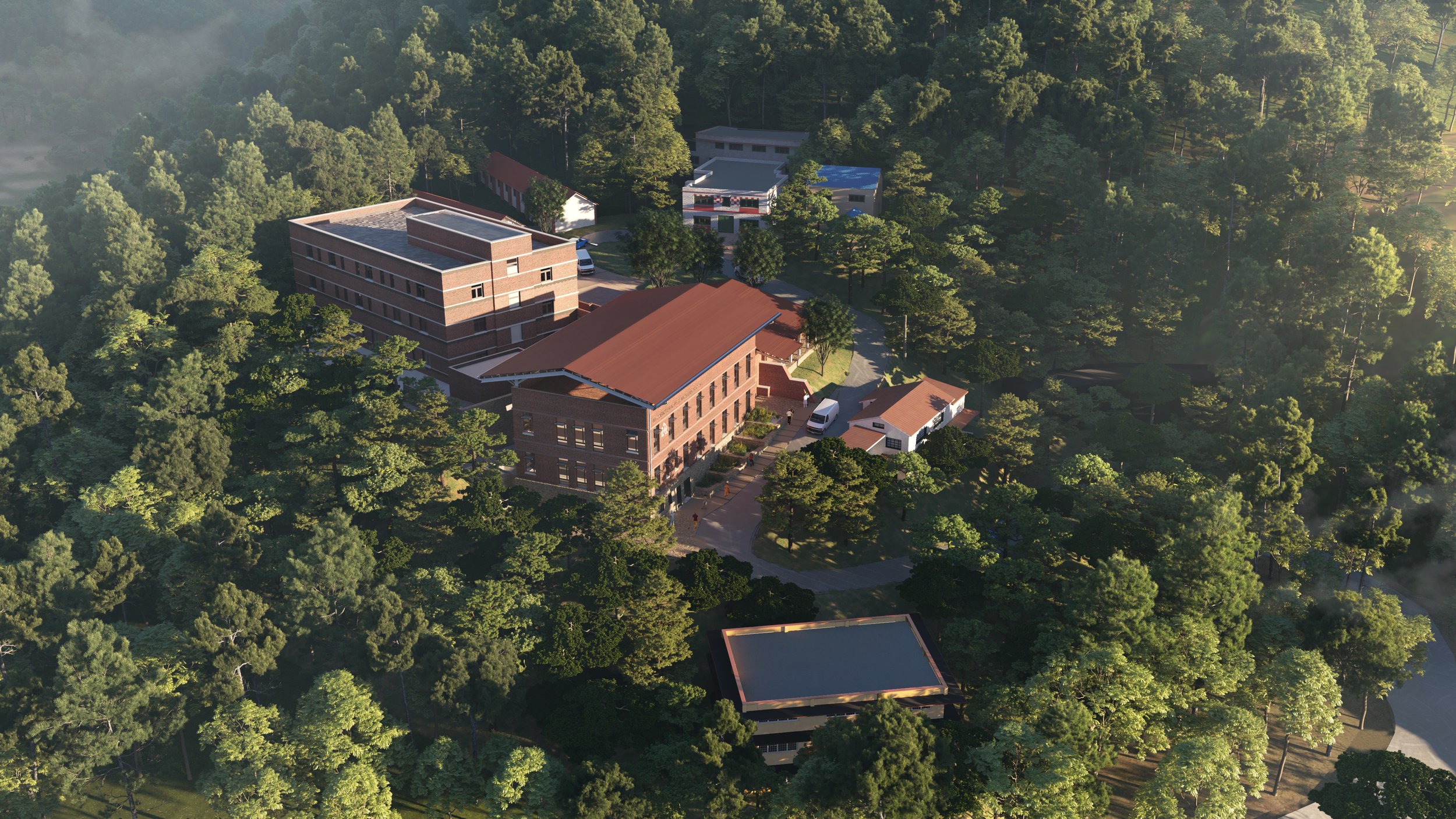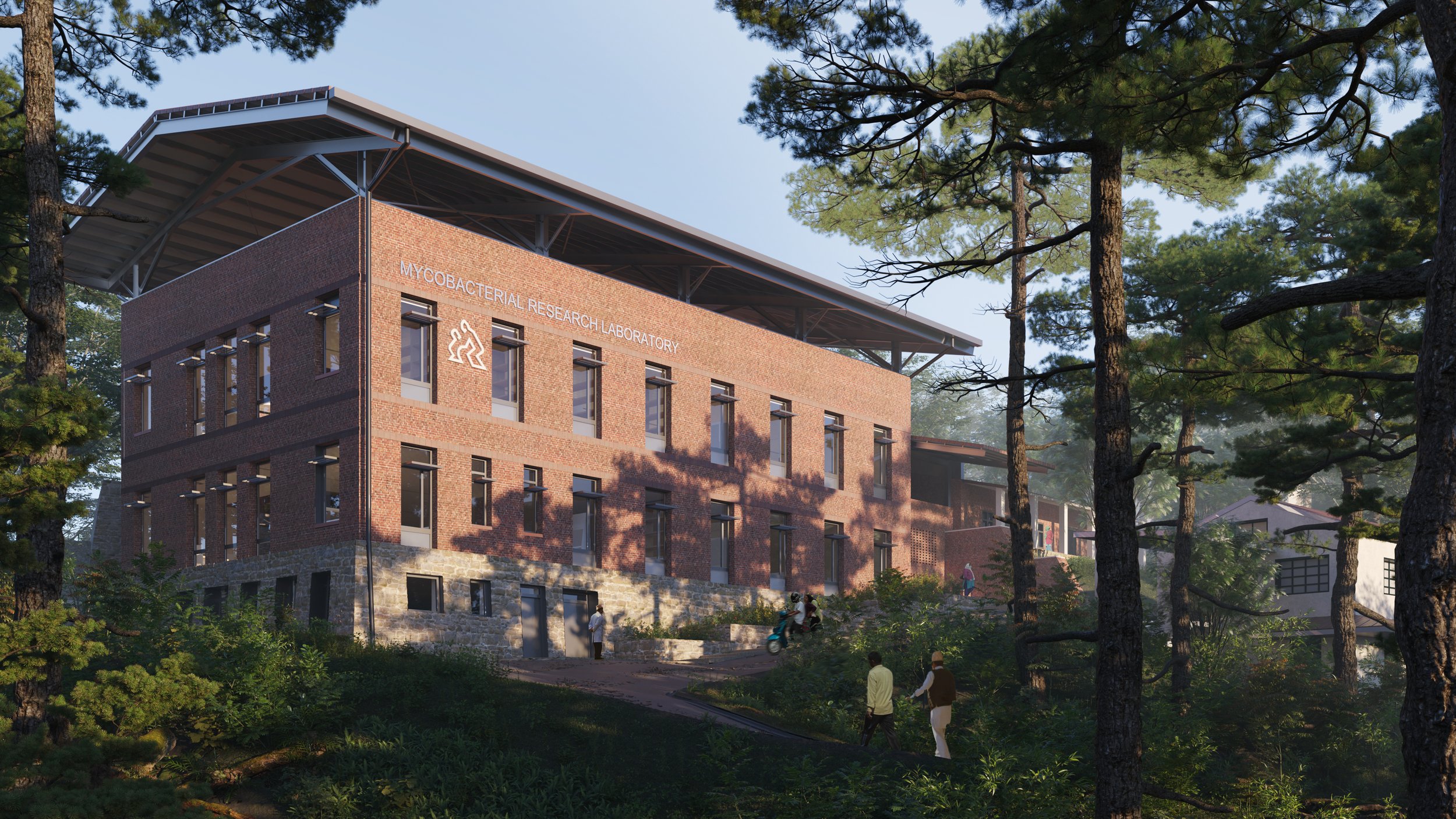Safeguarding leprosy research: rebuilding Nepal’s essential lab
Nestled in the forested slopes of the Kathmandu valley, Anandaban Hospital is Nepal’s main specialist centre for leprosy treatment. It’s one of the only places that people affected by leprosy can access reconstructive surgery. But in 2015, a terrible earthquake caused significant damage to the site, and Article 25 were involved in a feasibility study to reconstruct and refurbish the buildings.
Working with The Leprosy Mission, we have now redesigned and overseen the reconstruction of the hospital’s trauma centre. We’ve continued the partnership, and recently finished the designs for a new, improved research lab next door.
The hospital’s laboratory is currently housed in a former hostel, and lab technicians are working with equipment that desperately needs updating. The outdated conditions have put the lab in danger of losing its government licence – which would mean a huge knowledge gap in the pioneering research it carries out on late-stage leprosy.
The Article 25 team have long experience in the design and construction of medical facilities, as well as creating structures that respond to demanding landscapes and earthquake risks – all vital skills when it comes to designing a hospital site next to the Himalayas.
SOM - a More Than a Building platinum partner - created these striking visuals of how the completed lab will look.
Ground-breaking leprosy research
The lab is unique as it is focused on late-stage treatments for leprosy, which has historically been under-researched. In Nepal, sufferers often won’t visit a hospital in the early stages due to stigma, so they are seeking treatment when the leprosy is at an advanced point. As the hospital treats many of these cases on a day-to-day basis, the clinical side of the research lab is well placed to study and apply the most up-to-date treatments, and in turn share this information with the wider scientific community.
Current phase: a complete design
The design process included many complex elements as Article 25’s Project Architect, Mario Balducci, explains:
“This site is on a steep hill where there is a huge risk of landslides. A lot of work had to go into investigating the ground conditions and making sure that the building, which will have lots of retaining walls, is fit to be structurally resilient in the event of an earthquake.”
The laboratory is also service-heavy, meaning every room has a different practical use. This is why user consultation has been so important, as Mario illustrates: “We've been working closely with the lab team, talking through every decision with them. They have the practical experience of working in the lab and know the kind of problems they're likely to encounter that are unique to that environment. They have given us lots of important information in this respect, for example, they'd rather have a tiled floor rather than an Epoxy floor because of chemical spills. It was very much a discussion about the practicalities of their work and how the design can facilitate this.”
Article 25 now have a complete design for the building, and we are preparing the tender set for local contractors. The design includes a 1,100sqm laboratory and a 500sqm refurbishment across two further buildings which will house a Vivarium, Pharmacy and Blood Bank.
As soon as the design is approved, it will be full steam ahead on receiving and checking tenders, then appointing local contractors.
Cultural design exchange
A clear benefit to both Article 25 staff and the building stakeholders is the exchange of knowledge and culture which arises from every project and influences the final design. Mario talks about some interesting additions that Article 25’s international perspective brought to the project:
“It can be quite cold during the winter in Nepal and hospital staff end up having to wear their coats indoors. So, we’ve proposed a sustainable way to insulate the building, making the environment much more comfortable to work in. Article 25 brings that expertise in this particular building typology and healthcare in general, but also aspects related to bioclimatic design which really benefits users in the long term.”
Locally sourced materials
As we have already completed the Trauma Centre within the Anandaban Hospital complex, we have the advantage of knowing which local materials are suitable and available to use. The Trauma Centre was built with local brick to respect the traditional production and use of this material in Nepal. The lab will use this too. Mario explains the importance of sourcing local materials, something which Article 25 always prioritises:
“Within our design, we try to find and respect local materials and building methods. This also helps when we use local contractors to build our projects. In this case, because it is such a complex building, there are going to be a lot of challenges along the way, so the more we can facilitate the process by choosing materials and techniques that everyone knows and has had experience with, the smoother the process will be.”
A stable future for late-stage leprosy research
The Anandaban Mycobacterial Research Laboratory contributes vital knowledge to the treatment of leprosy, and Article 25 is extremely motivated to continue the project through to completion and give hospital staff the best possible space to work in, which will meet the necessary biosafety standards and safeguard future research.




